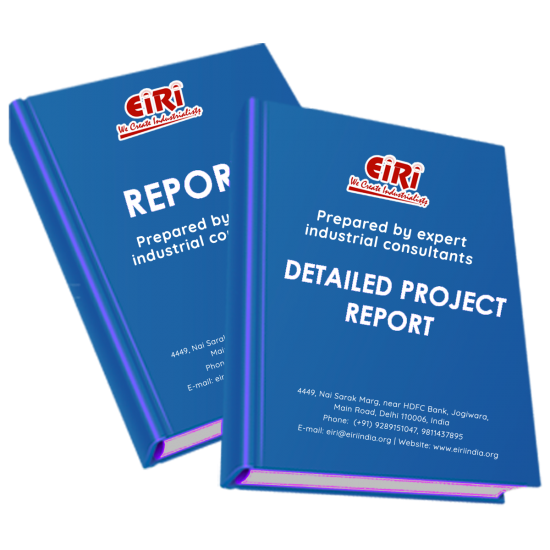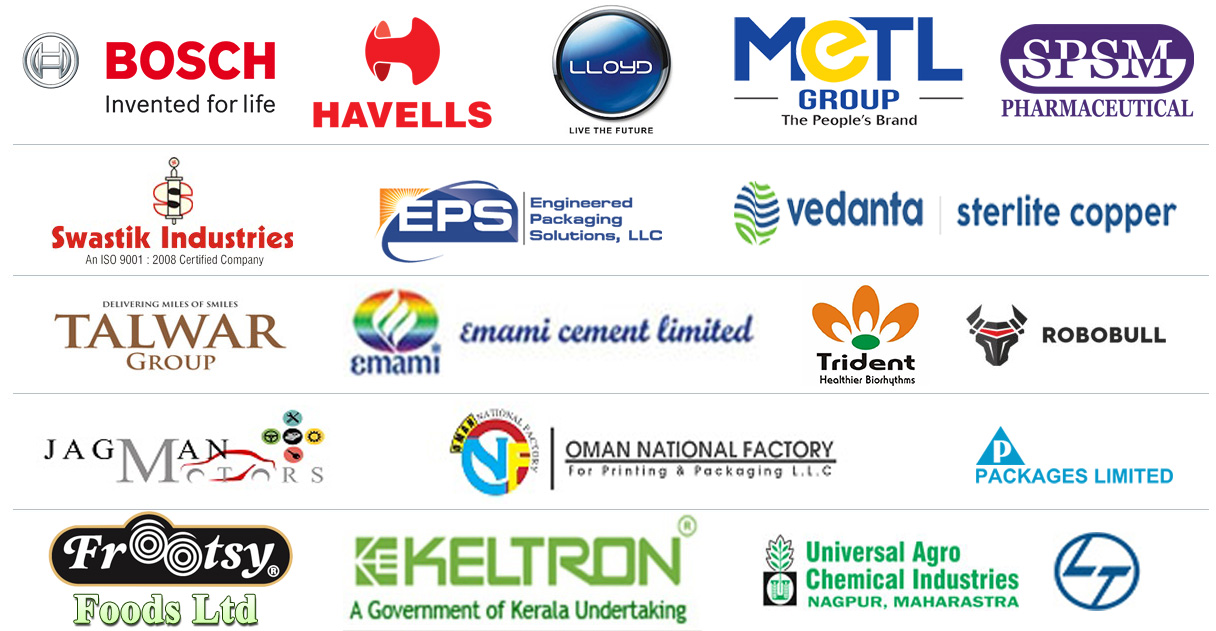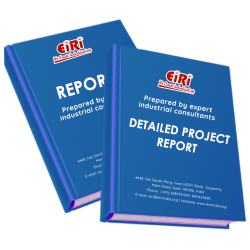Detailed Project Report on food grade phosphoric acid by thermal process

- More than 40 years of experience
- Managed by expert industrial consultants
- ISO 9001-2015 Certified
- Registered under MSME, UAM No: DL01E0012000
- 24/5 Research Support
Get your quesries resolved from an industry expert. Ask your queries before report or book purchase. - Custom Research Service
Speak to the our consultant to design an exclusive study to serve your research needs. - Quality Assurance
All reports are prepared by highly qualified consultants & verified by a panel of experts. - Information Security
Your personal & confidential information is safe & secure.
FOOD GRADE PHOSPHORIC ACID
BY THERMAL PROCESS
[CODE NO.3303]
Phosphoric acid is an important intermediate chemical product. It is used mainly by the fertilizer industry. In 1980 the worldwide production capacity for phosphoric acid yielded about 33 million tons of P2O5 equivalents.
Pure 100% phosphoric acid is a white crystalline solid (monoclinic) that melts at 38.85oC to a syrupy liquid which has a strong tendency to super cool.
In dilute solutions, phosphoric acid has a pleasingly sour taste which is similar to but distinguishable from that citric, tartaric, lactic and acetic acids Rock phosphate is the major and essential raw material required for production as phosphoric acid by any route. Usually, when considering a phosphate rock as a potential raw material, the first approach is to analyze its chemical composition, i.e. the P2O5 content and its impurities.
Phosphoric acid (H3PO4) is produced by 2 commercial methods: wet process and thermal process. Wet process phosphoric acid is used in fertilizer production. Thermal process phosphoric acid is of a much higher purity and is used in the manufacture of high grade chemicals, pharmaceuticals, detergents, food products, beverages, and other nonfertilizer products.
There are two basic methods in commercial use for the production of phosphoric acid - the wet process and the furnace process. In the electric furnace process elemental phosphorous is produced by the electrothermic reduction of phosphate rock with carbon (coke). The silica added to the furnace charge behaves as a strong acid at the high temperatures (about 1500°C) employed in furnace operations and combines with the calcium constituent of the phosphate rock to form calcium silicate. The overall reaction, neglecting carbonates, fluorides, and other non-phosphatic constituents, may be expressed as follows:
In the manufacture of furnace phosphoric acid, the condensed elemental phosphorus is burned in air. The phosphorus oxide vapor (P.01o) formed reacts with water to produce phosphoric acid.
The phosphoric acid thus produced has very small amounts of impurities and the major industrial markets for this acid are in the manufacture of sodium phosphates and tetra potassium pyrophosphate for use in detergents and calcium phosphates for use as an animal feed supplement and in dentifrices, medicinal, glass, food, and plaster stabilizers.
COST ESTIMATION
Plant Capacity : 5.00 Ton/day
land & Building (3000 Sq.Mtrs) : Rs. 3.97 Cr
Plant & Machinery : Rs. 3.00 Cr
Working Capital for 2 Months : Rs. 1.16 Cr
Total Capital Investment : Rs. 8.33 Cr
Rate of Return : 17%
Break Even Point : 68%
INTRODUCTION
PHOSPHORIC ACID FROM ROCK PHOSPHATE
PHOSPHORIC ACID (ORTHO) FOOD GRADE (75%)
PRODUCT SPECIFICATIONS
PROPERTIES & SPECIFICATION OF PHOSPHORIC ACID
PURE PHOSPHORIC ACID:-
TYPICAL ANALYSIS OF PHOSPHORIC ACID
PROPERTIES
PHOSPHORIC ACID POSSESSES FOLLOWING PROPERTIES:-
USES & APPLICATIONS
PHOSPHORIC ACID IS USED IN A NUMBER OF AREAS, FEW OF ITS
USES ARE GIVEN BELOW:-
GRADES OF PHOSPHORIC ACID
REQUIREMENTS FOR ORTHOPHOSPHORIC ACID
B.I.S. SPECIFICATION
MARKET SURVEY
ANNUAL PRODUCTION OF PHOSPHORIC ACID
DETAILED IMPORT DATA OF PHOSPHORIC ACID
85 FOOD GRADE
EXPORT DATA FOOD GRADE PHOSPHORIC ACID
PRESENT MANUFACTURERS/EXPORTERS/SUPPLIERS OF PHOSPHORIC ACID
TECHNOLOGY OVERVIEW OF PHOSPHORIC ACID
WET ACID PROCESS
THERMAL PROCESSES
ELECTRIC FURNACE PROCESS
THE HARD PROCESS
THE IMPROVED HARD PROCESS
IHP PROCESS DESCRIPTION
MANUFACTURING PROCESS OF PHOSPHORIC ACID (FOOD GRADE)
BY THERMAL PROCESS
RAW MATERIAL REQUIREMENTS
PROCESS FLOW DIAGRAM
PURIFICATION OF PHOSPHORIC ACIDE
PROCESS IN DETAILS
TABLE (METRIC AND ENGLISH UNITS). CONTROLLED EMISSION
FACTORS FOR THERMAL PHOSPHORIC ACID PRODUCTION
EMISSIONS AND CONTROLS
DIFFERENT PRODUCTION PROCESSES
OF PHOSPHORIC ACID
IN EUROPE THE MORE CURRENT PROCESSES ARE THE FOLLOWING:-
TABLE: SHOWS THE VARIATION IN CHEMICAL ANALYSIS
OF VARIOUS PHOSPHATE ROCKS.
PRINCIPLES OF THE PROCESS
DIHYDRATE PROCESS
THE DISADVANTAGES ARE:-
DIHYDRATE PROCESS.
GRINDING
REACTION
FILTRATION
CONCENTRATION
HEMIHYDRATE (HH) PROCESS
CAPITAL SAVINGS.
PURER ACID.
LOWER ROCK GRINDING REQUIREMENTS.
FILTRATION RATE.
PHOSPHATE LOSSES.
SCALING.
FILTER CAKE IMPURITY.
CORROSION.
RECRYSTALLISATION PROCESSES
SEVERAL PROCESSES HAVE BEEN DEVELOPED BUT THERE ARE
ONLY THREE BASIC ROUTES:-
PURIFICATION OF GREEN PHOSPHORIC ACID
TO FOOD GRADE PHOSPHORIC ACID
STORAGE AND HANDLING OF PHOSPHORIC ACID
STORAGE CONSIDERATIONS
CONSTRUCTION MATERIALS
STORAGE TANK
• STAINLESS STEEL
• RUBBER-LINED CARBON STEEL
• FIBERGLASS REINFORCED POLYESTER (FRP)
HEALTH AND SAFETY INFORMATION
FIRE, EXPLOSION AND HEALTH HAZARD DATA
TOXICOLOGICAL INFORMATION
PERSONAL PROTECTIVE EQUIPMENT
TECHNOLOGY SUPPLIERS FOR PHOSPHORIC ACID
SUPPLIERS OF RAW MATERIALS
PHOSPHATE ROCK
SILICA SAND
LABORATORY CHEMICALS
SODIUM HYDRAUXIDE
CALCIUM HYDROXIDE
SULPHURIC ACID
PACKAGING MATERIALS (HDPE WOVEN LAMINATED BAGS)
SUPPLIERS OF PLANT AND MACHINERY
JAW CRUSHER
ELECTRIC ARC FURNACE
EVAPORATORS
FLUIDIZED BED DRYER
AIR COMPRESSORS
LABORATORY EQUIPMENTS
PACKAGING MACHINE
INSTRUMENTATION & PROCESS CONTROL EQUIPMENTS
MATERIAL HANDLING EQUIPMENTS
STORAGE VESSEL
D.G. SETS
APPENDIX – A:
1. COST OF PLANT ECONOMICS
2. LAND & BUILDING
3. PLANT AND MACHINERY
4. FIXED CAPITAL INVESTMENT
5. RAW MATERIAL
6. SALARY AND WAGES
7. UTILITIES AND OVERHEADS
8. TOTAL WORKING CAPITAL
9. COST OF PRODUCTION
10. PROFITABILITY ANALYSIS
11. BREAK EVEN POINT
12. RESOURCES OF FINANCE
13. INTEREST CHART
14. DEPRECIATION CHART
15. CASH FLOW STATEMENT
16. PROJECTED BALANCE SHEET
How to Make Project Report?
Detailed Project Report (DPR) includes Present Market Position and Expected Future Demand, Technology, Manufacturing Process, Investment Opportunity, Plant Economics and Project Financials. comprehensive analysis from industry covering detailed reporting and evaluates the position of the industry by providing insights to the SWOT analysis of the industry.
Each report include Plant Capacity, requirement of Land & Building, Plant & Machinery, Flow Sheet Diagram, Raw Materials detail with suppliers list, Total Capital Investment along with detailed calculation on Rate of Return, Break-Even Analysis and Profitability Analysis. The report also provides a birds eye view of the global industry with details on projected market size and then progresses to evaluate the industry in detail.
We can prepare detailed project report on any industry as per your requirement.
We can also modify the project capacity and project cost as per your requirement. If you are planning to start a business, contact us today.
Detailed Project Report (DPR) gives you access to decisive data such as:
- Market growth drivers
- Factors limiting market growth
- Current market trends
- Market structure
- Key highlights
Overview of key market forces propelling and restraining market growth:
- Up-to-date analyses of market trends and technological improvements
- Pin-point analyses of market competition dynamics to offer you a competitive edge major competitors
- An array of graphics, BEP analysis of major industry segments
- Detailed analyses of industry trends
- A well-defined technological growth with an impact-analysis
- A clear understanding of the competitive landscape and key product segments
Need Customized Project Report?
- Ask for FREE project related details with our consultant/industry expert.
- Share your specific research requirements for customized project report.
- Request for due diligence and consumer centric studies.
- Still haven't found what you're looking for? Speak to our Custom Research Team
About Engineers India Research Institute:
Note: We can also prepare project report on any subject based on your requirement and country. If you need, we can modify the project capacity and project cost based on your requirement.
Our Clients

Our Approach
- Our research reports comprehensively cover Indian markets (can be modified as per your country), present investigation, standpoint and gauge for a time of five years*.
- The market conjectures are produced on the premise of optional research and are cross-accepted through associations with the business players
- We use dependable wellsprings of data and databases. What's more, data from such sources is handled by us and incorporated into the report
Why buy EIRI reports?
- Our project reports include detailed analysis that help to get industry Present Market Position and Expected Future Demand.
- Offer real analysis driving variables for the business and most recent business sector patterns in the business
- This report comprehends the present status of the business by clarifying a complete SWOT examination and investigation of the interest supply circumstance
- Report gives investigation and top to bottom money related correlation of real players/competitors
- The report gives gauges of key parameters which foresees the business execution





















